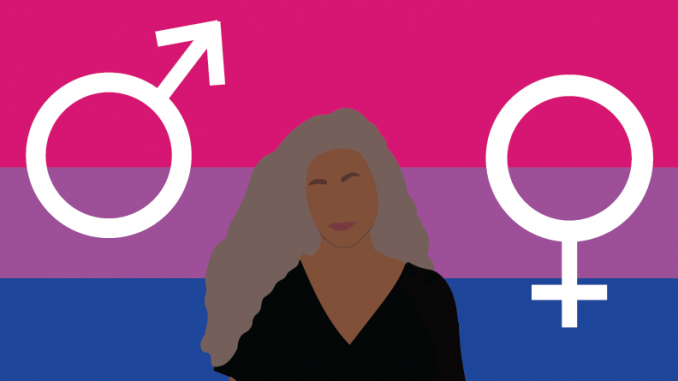
When Nick Cipolla watches movies and television, he feels that he doesn’t have any role models to look to.
Known as “bisexual erasure,” this phenomenon is a lack of acknowledgment and ignoring of the clear evidence that bisexuals exist, according to GLAAD, an LGBTQ media monitoring organization.
Cipolla, a senior creative writing major, could only list two examples of bisexuals in mass media: the character Eleanor Shellstrop of the NBC comedy “The Good Place” and “Brooklyn Nine-Nine” character Rosa Diaz, a stoic, sarcastic cop whose bisexual story arc has been praised by the LGBTQ community, according to Screen Rant, an entertainment news website.
But in all forms of media, Cipolla said he’s failed to see a male bisexual character who reflects his own experience.
“I would personally love to read more books, or watch more movies or TV shows [with bisexual characters],” Cipolla said. “To put it into purely capitalistic terms, I would consume more of that media, if it existed.”
GLAAD also reported that one example of erasure is the denial of bisexuality as a legitimate orientation, dismissing it as a “phase.”
Robyn Friedman, a senior communication studies major, encountered this when she came out to her parents as bisexual after her freshman year. Although they were accepting, she said that they have yet to understand bisexuality.
“My parents have definitely implied I’m going to choose a side one day, that I can’t be both,” Friedman said. “I know that probably a lot of other people feel the same way that if they come out as bi in college, then it’s just going to be another phase.”
Friedman feels that this stigma is not exclusive to non-queer people.
“People outside of the community, even those in the LGBTQ community, want you to stick to one orientation only, and that is probably what contributes to [bisexual erasure] most,” she said.
Because Friedman is currently dating a man, she said she’s experienced another form of bi-erasure as people assume she can “choose a side.”
Cipolla said he’s experienced this as well, as he is in a heterosexual relationship.
“A person who is bi cannot be assumed to be one or the other until we see the person they’re with, and then we know,” he added.
Steve Johnston, a 2018 Beasley School of Law alumnus, created Philly BiVisibility, a Facebook page that operates as a hub for resources for the city’s bisexual community.
While at Temple, Johnston searched for a bisexual community but created the Facebook group when he found none. Since then Johnston has helped organize BiVisibility Day, a rally in Philadelphia to raise awareness for bisexual visibility, Philadelphia Gay News reported.
Visibility can combat the misconceptions and microaggressions of bi-erasure, Johnston said, adding that he endured these misconceptions in his personal and professional life.
He has had doctors profile him as gay and insist he gets an HIV test, Johnston said.
Because of these experiences, he said it’s important for bisexuals to navigate and reaffirm their identity in college and after graduation.
“You’re going to have to learn how to deal with it one way or the other, either by working to change policy through the school, or working with your peers, or working with yourself through therapy,” he added. “Just because you’re out of school doesn’t mean things are automatically going to get better, but you have a lot more opportunity to make them better.”
The best way to deal with erasure from the heterosexual and LGBTQ communities is for bisexual people to build a community, Friedman said.
“Finding others that identify is just very validating,” she added. “One of the most important things for people who are bisexual is that their identity is valid, no matter who they’re with, and no matter what the people around them say.”



Be the first to comment